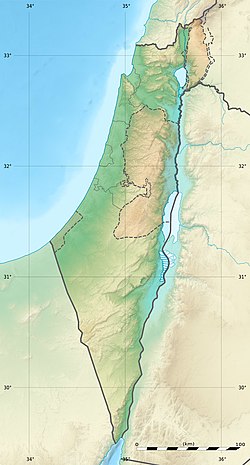Top Qs
Timeline
Chat
Perspective
Nahal Me'arot Nature Reserve
Archaeological site in northern Israel From Wikipedia, the free encyclopedia
Remove ads
The Caves of Nahal Me’arot / Wadi el-Mughara ("Caves Creek"), named here by the Hebrew and Arabic name of the valley where they are located, are a UNESCO Site of Human Evolution in the Carmel mountain range near Haifa in northern Israel.[1][2]
The four UNESCO-listed caves are:
- Tabun or Tanur cave (lit.: "Oven")
- Gamal or el-Jamal cave ("Camel")
- El Wad or Nahal cave ("Stream")
- Skhul or Gedi cave ("Kid")
The four caves were proclaimed a site of "outstanding universal value" by UNESCO[1] in 2012. They are protected within a nature reserve.[2]
The caves were used for habitation by hominins and prehistoric humans and contain unique evidence of very early burials, at the archaeological site of el-Wad cave in the Nahal Me'arot Nature Reserve.
Remove ads
Gallery
- A Paleolithic reconstitution in Jamal Cave
- Paleolithic tools in Jamal Cave (replica)
- Entrance to el‑Wad Cave
- Inside el‑Wad Cave
- Excavation work in el‑Wad Cave's terrace
- El‑Wad point microlith
- Homo neanderthalensis fossil from Tabun C1 (replica). 120000 – 50000 BP (National Museum of Natural History)
Remove ads
See also
References
External links
Wikiwand - on
Seamless Wikipedia browsing. On steroids.
Remove ads












